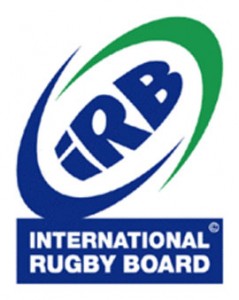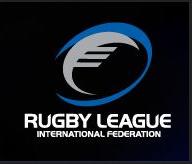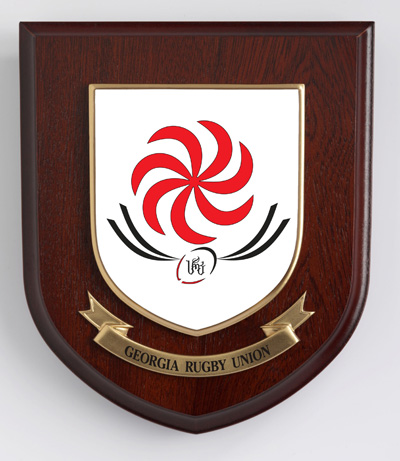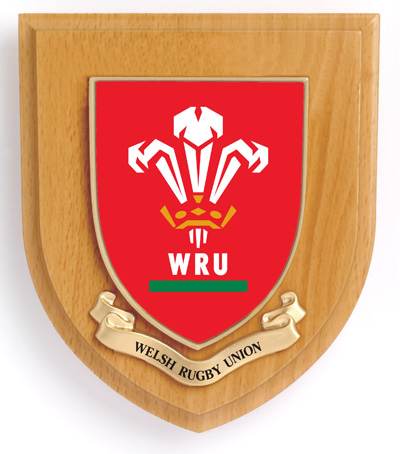Rugby Clubs

 The current rugby league world cup has provided us with some exciting matches and made me curious about the difference between rugby league and rugby union.
The current rugby league world cup has provided us with some exciting matches and made me curious about the difference between rugby league and rugby union.
Running with the ball in football became common in the1830s at Rugby School. It was known as “Rugby School football” and gained in popularity in the 1850s and 1860s. The rules were formalised at the formation of the Rugby Football Union (RFU) in 1871.
Rugby football became a popular sport and soon spread to Australia and New Zealand. Rugby was a “gentleman’s sport”, played by amateurs. In 1892 some Yorkshire clubs were accused of professionalism after it was discovered that they were paying compensation to players who were taking time off from paid employment to play rugby. This led to the proposal that players be paid up to six shillings when they missed work because of match commitments.
This proposal was voted down by the RFU, and resulted in some prominent Lancashire clubs declaring support for their Yorkshire colleagues in their proposal to form a professional Northern Union and the Northern Union (NU), was formed.
RFU authorities introduced sanctions against clubs, players and officials involved with Northern Union sides. At this time the two forms of rugby became known as “rugby league” and “rugby union”.
Initially the split was administrative only, but changes were gradually introduced into rugby league – the first being awarding a penalty for a deliberate knock-on. Gradually more changes were made, and by 1907 the following major changes had been implemented:
- Only 13 players per team in rugby league, as opposed to 15 in union – with the 2 flankers being removed
- The “play the ball” (heeling the ball back after a tackle) rather than a ruck
- The elimination of the line-out
- A slightly different scoring structure, with all goals only being worth 2 points
Rugby League evolved to include a number of tournaments and develop a strong following. The two codes of rugby have developed and flourished completely independently of one another, although there are players who have crossed over and achieved success in both.
In 1995 the IRB International Rugby Board, declared rugby union an “open” game, making it possible for players to be paid to play rugby.
Rugby Union is governed by the International Rugby Board (IRB) and Rugby League by the Rugby League International Federation (RIFL)
Rugby union is more complex, with more laws than rugby league, although Rugby league has been described as easier for spectators to understand. Most players who have played both types of rugby at top level agree that Rugby union is more complicated and rugby league much more simple in comparison”. Some have suggested that Rugby union requires more tactical skills, while rugby league expects a higher level of fitness
Traditionally, the two forms of rugby have had a perceived class split, with rugby union seen as more “middle class” and rugby league “working class”. This divide can generally be seen as rugby union being played by players who had sufficient means to be able to take time off work to play rugby without any compensation, whereas rugby league players could not afford to take time off work to play the sport.
World Cups
Rugby league introduced its World Cup in 1954 and it has been held intermittently since, in various formats. Rugby union’s first World Cup was held in 1987 and it is contested every four years.
The current World Cup holders for both disciplines is New Zealand.
The Georgia Rugby Union has been in existence since 1961, initially as a domestic union within the Soviet Union, and after independence, a national union and a member of the International Rugby Board.

Georgia Rugby Union
Rugby gained popularity in Georgia when Jacques Haspekian from Marseilles started teaching rugby to students in the late 1950s.
He was interviewed in 2007 when Georgia played France in the 2007 Rugby World Cup.
By 1961 there was enough interest I rugby to form a three team domestic competition – the Tbilisi Championship. By 1964 the Tbilisi Rugby Section had grown to become the Georgia Rugby Federation, and functioned as a regional body within the USSR, although half of all Soviet rugby clubs were in Georgia.
A year after admission to the IRB, Georgia played their first international match against Zimbabwe, which they won 16 – 3.
I was surprised to discover that rugby union is one of the most popular sports in Georgia, in fact even more popular than football in the south of the country, and Georgian Rugby draws huge crowds – over 65,000 to watch Georgia play Russia in the European Nations Cup.
Because Georgia is a member of the Council of Europe, Georgian rugby players are eligible to play rugby in France. This has allowed many of Georgia’s top rugby players to play for French clubs.
The Georgian national rugby team is affectionately known as the “Lelos” ( “Lelo” is also the Georgian term for a “try”) – originally a traditional Georgian sport not dissimilar to Rugby Union. The Lelos qualified for their first Rugby World Cup in 2003, and qualified again in 2007 and 2011.
Play-offs in November 2013 will decide their fate for the 2015 Rugby World Cup.
Rowan Displays are proud of their Sports Shields and Plaques and were pleased to have won the contract to produce plaques for the Georgia Rugby Union, and look forward to seeing the team in action at the Rugby World Cup in the UK in 2015.
We’re always interested in the origins of any plaques we produce, even those as instantly recognizable as the Welsh Rugby Union.

Welsh Rugby Union
They have a very comprehensive page about their fascinating history on their website at www.wru.co.uk/eng/thewru/history/brief_history.php
We were interested to note that the crest used by the Welsh Rugby Union is based on the “The Prince of Wales’s feathers” which is the coat of arms of HRH The Prince of Wales.
The original crest is made up of three white feathers rising from a gold crown, although the WRU changed the design slightly in the 1990s. This was done partly in order to copyright the design, and partly to modernise the design and make it more recognisable as exclusively WRU. The original Coat of Arms include the motto “Ich Dien” which has been replaced in the WRU badge with simply “WRU”.
The original design has raised some controversy over the years with suggestions that it was more symbolic of British monarchy than Welsh Rugby.
Hopefully this is no longer the case, although whatever badge you attach to it there is no denying the Welsh Rugby Union is a much loved and well respected part of Welsh life.